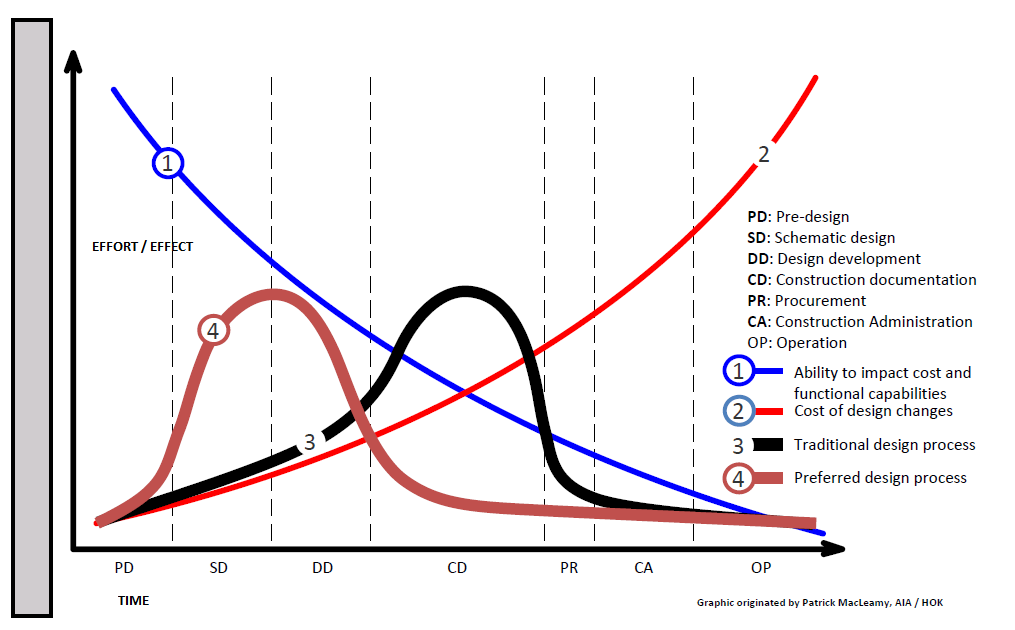Construction Administration presents its fair share of challenges in the architectural industry, from managing clients' change of heart in the midst of construction to dealing with contractors that are reluctant to revise their work. There's a fine balance to maintain in ensuring the client's satisfaction with the final product, advocating for their needs, and attempting to guide their decisions before construction begins.It can be a demanding task to balance the administrative role with redesigning segments of the project, yet the journey is just as critical as the destination.
Constructing A Consistent Pre-Construction Process
How do we provide a seamless transition from design to construction? How do we guide and mentor our clients to make the necessary decisions early on? Our solution revolves around a meticulous design procedure that involves inviting our clients to explore their virtual structures via immersive VR technology. This enables them to identify potential modifications prior to the finalization of documents. The next piece is to make sure the team is prepared to collaborate if/when things don’t go to plan. In instances where certain materials prove costlier than expected or when specific equipment has extended lead times, we can actively engage in a streamlined Value Engineering process. This guarantees the client's satisfaction remains paramount, yielding a final product they can take pride in, even if it veers from their initial selection.

Preventing Dysfunction In The Construction Process
Typical dysfunction often occurs when the owner communicates directly to the contractor, bypassing the architect. This creates confusion about the legitimacy and intent behind the changes. The key to avoiding these issues lies in the owner, architect, and contractor (OAC) meetings. These meetings are pivotal for keeping the project on track and staying on top of time-sensitive items, including potential design changes. Changes, as inevitable as they may be, can present complications. These complications depend significantly on the owner's capacity to bear the cost of these changes. In many instances, owners are willing to accept the cost of alterations, but the full cost of a change may not be clear to them. Our job, along with that of the contractor, is to help them understand what the change truly entails.
During construction, if the owner identifies an aspect they desire to alter, it should ideally be communicated to the architect first. This way, the change can be brought to the contractor in an organized manner, giving them time to optimize the process to minimize cost. Communication earlier on can avert a multitude of future issues.
Navigating Complex Owner-Contractor Relationships
It is always pertinent to follow the guidelines set forth in the contract, but when the owner and contractor are the same legal entity, it becomes even more crucial to understand the contract. Our AIA agreement outlines the appropriate procedures and processes for change orders. Following these protocols will improve the overall process. If they're not adhered to, it can result in complications such as failed inspections, non-compliance with codes, the need to resubmit changes to the city, pricing changes, and time wastage.
Risk Mitigation As An Architect
To mitigate risk, getting everything in writing is essential. Following up conversations with written clarification ensures everyone is on the same page. Documenting approvals and rejections allows us to bring clarity and shine a light on any potential miscommunication.
Construction Administration: The Benefits Of A Smooth Process
A well-communicated and organized process reduces stress and results in a better product, relationship, and overall experience for the owner. It also mitigates risk and reduces additional work for all parties involved.

When a change is introduced, a cost impact also exists, which is illustrated by the MacLeamy curve. The cost may not be as simple as the cost of the materials; it can include additional architectural services, contractor fees for expedited materials and labor, and potential lost revenue of delaying a building opening. Moreover, changes can be interruptions to the typical workflow of the construction team. Shifting the focus to design can impact typical submittal times, shop drawings times, and material orders. It can also cause confusion for subcontractors. While yes, changes are inevitable, they don’t have to derail a project. Working together with the Owner and guiding them through changes is key. As architects, we sell a service, and our satisfaction comes from providing a seamless process and a beautiful end result for our clients.
Our mission at Vessel is not only to construct a space for people to flourish but to create a process where our team and clients can thrive. We aim to enhance the experience for the owner, contractor, and the entire team.
In conclusion, the challenges in construction administration can be daunting but are not insurmountable. By championing clear communication, following established procedures, and advocating for the owner, we can navigate these complexities and deliver not just a beautifully constructed building but an optimized and seamless process.
More from Author
Vessel Architecture & Design | Mar 15, 2024
4 ways to streamline your architectural practice
Vessel Architecture's Lindsay Straatmann highlights four habits that have helped her discover the key to mastering efficiency as an architect.
Vessel Architecture & Design | Oct 30, 2023
Navigating architectural challenges—from 'unbuildable' to unbelievable
Mick Schaefer, AIA, NCARB, LEED GA, recounts the challenges Vessel Architecture & Design had to overcome while designing a state-of-the-art senior living facility.
Vessel Architecture & Design | Oct 4, 2023
Transforming the entry experience with biophilic design
Vessel Architecture & Design's Cassandra Wallace, AIA, NCARB, explores how incorporating biophilic design elements and dynamic lighting can transform a seemingly cavernous entry space into a warm and inviting focal point.
Vessel Architecture & Design | Jun 16, 2023
Can a VR-enabled AEC Firm transform building projects?
With the aid of virtual reality and 3D visualization technologies, designers, consultants, and their clients can envision a place as though the project were in a later stage.










